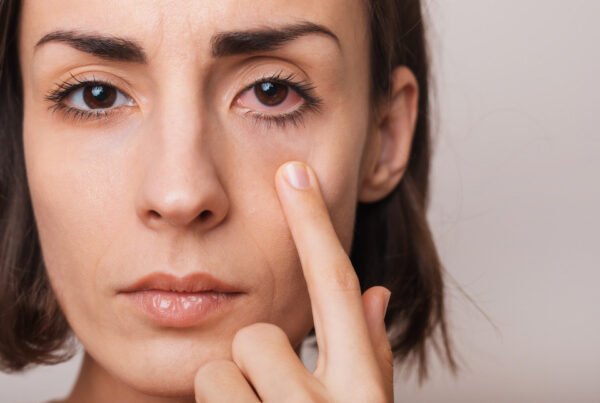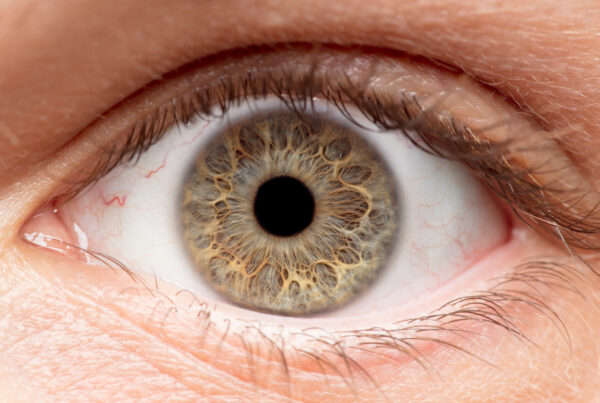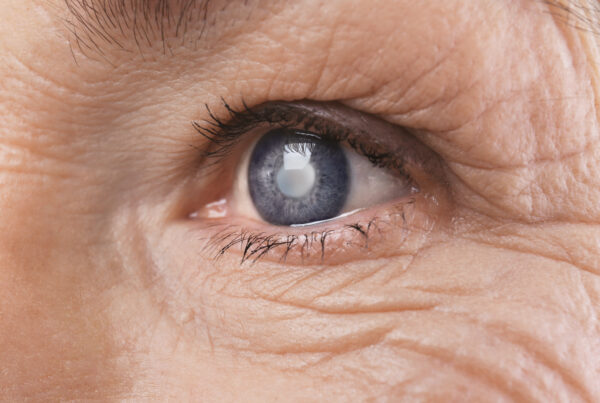
It’s January. Half the days are overcast anyway. I know what you’re thinking, “I can leave my sunglasses at home, right?” Wrong! Sunglasses are a ‘necessary accessory,’ year-round. Winter may provide more overcast days, but the powerful rays are still beaming down as they pass through the clouds. The penetrating ultraviolet rays may even be more harmful as they are scattered by the overcast light and any snow or ice in the area. Speaking of snow, it reflects about 80% of the sun’s UV light (compared to grass, water, or soil), giving the damaging rays a second route to your eyes.
No amount of squinting or hand-visoring will adequately protect the vital structures of the eye. Another consequence of enduring the cold months is the absence of leaves on trees. As a result, there’s less shade to provide relief from a bright background. The sun also hangs lower in the sky in the winter months, providing a more direct angle of sunlight into your eyes as you drive to work in the mornings. With all these factors, glares oftentimes become debilitating and can cause accidents from lack of visibility.
What are the effects of all this harmful sunlight?
Both short- and long-term effects are seen with unprotected exposure to UV light. The most common short-term problem is photokeratitis, also known as ‘snow blindness,’ in which the corneas (the front clear windshield of the eye) are basically sunburned from intense or prolonged exposure to UV radiation. The rays that cause this damage are usually reflected from snow or ice, so sunglasses or goggles with UV protection are extremely important in these environments. Symptoms of this condition include pain or redness, tearing, blurry vision, light sensitivity, swelling, and more.
Even if you have a winter with no precipitation, long term exposure to everyday UV rays without protection still plays a part in other complications including cataracts, macular degeneration, and external growths. Cataracts is the development of a cloudy lens inside the eye, causing blur, glare, and alteration of colors. While cataracts occur in everyone regardless of many things, sun exposure is a factor that can significantly speed up the process, causing you to need cataract treatment or removal surgery at a much younger age.
Macular degeneration is a loss of important neural tissue in the macula, which the brain uses for central vision, causing blind spots and distortion. Macular degeneration has a few known risk factors, one of them being long-term UV exposure. Wearing sunglasses will considerably lower this risk and could end up saving you precious central vision.
Lastly, common eye growths known as pinguecula and pterygia may develop on the outer surface of the eye. While usually benign, they can cause complications such as inflammation, high astigmatism, and blur. If significant enough, a surgery may be needed to remove them. Even with a surgery, the growths may return. We must monitor for growths that could be cancerous, so these tissues are often sent to a pathologist to determine if there are any concerning cells.
Your risk of these conditions can be reduced with the simple use of a pair of sunglasses. It’s important to look for lenses that block 100% of UV rays. Frames that wrap around the face will provide additional protection. Polarized lenses aren’t necessary but can provide additional relief from irritating glares. Contact the SureVision office if you’re concerned about any of these conditions, or you’re simply looking for a pair of everyday sunglasses to protect your eyes.



